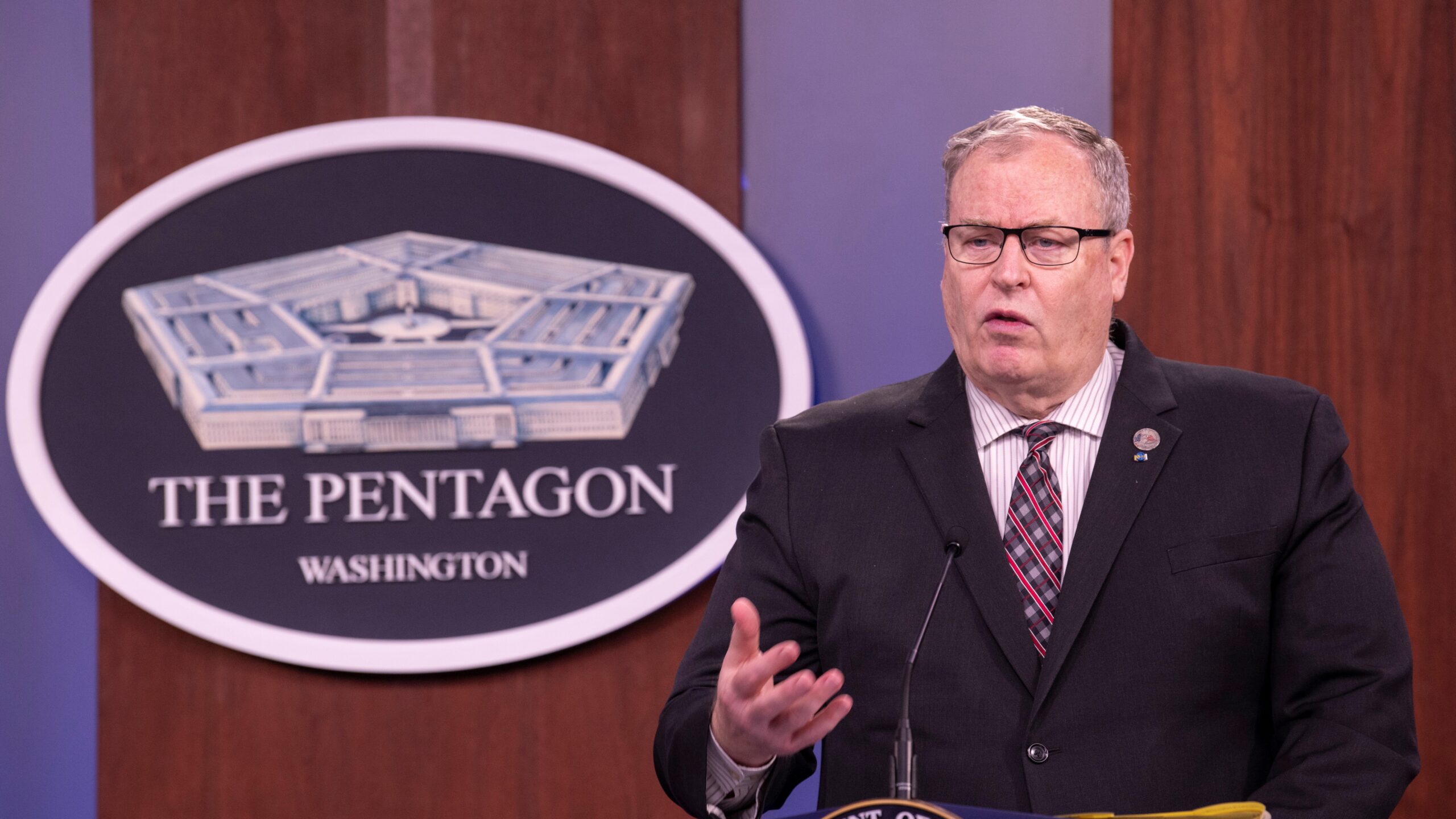ROBERT O. WORK and BILLY FABIAN

The Pentagon is focused on making All Domain Operations, in all its various forms, come to fruition. And few are as familiar with the issues involved as Robert Work, who served as deputy secretary of defense from 2014-2017. In this op-ed, he is joined by Billy Fabian of decision-sciences company Govini to argue for why the Pentagon needs to refocus its investments in this critical area.
We are past the tipping point where information and decision-centric capabilities are more important instruments of war than kinetic weapons. That is to say, victory in future high-intensity conflicts may no longer hinge on who has the best warships, planes, and tanks, but rather on who can better harness information to act faster and more effectively than their adversary.
The Defense Department is betting that its emerging Joint All-Domain Command & Control (JADC2) concept— which seeks to connect sensors, deciders, and shooters from across all services and domains into a theater-wide, or even global, battle network — will provide the US military with just such an advantage should a war against a near military peer like China or Russia break out sometime in the future. But actually implementing JADC2 will force the Department to grapple with significant technological and interoperability challenges.
A recent analysis by Govini found that over the past five years the Defense Department has spent billions of dollars on developing and procuring Command, Control, Communications, Computers, and Information (C4I) capabilities. In theory, that’s a good thing: C4I capabilities are critical to JADC2 because they will function, in effect, as its central nervous system. However, the bulk of the spending has been concentrated on major service programs, such as the Army’s Integrated Air and Missile Defense Battle Command System (IBCS) and the Navy’s Consolidated Afloat Network and Enterprise Services (CANES), with 33% of all JADC2-related spending going to just five major C4I programs.
As a result, the Department faces a two-sided interoperability challenge.
First, the service C4I systems procured over the period were not necessarily designed with joint interoperability in mind. And given the high level of expenditures on these programs, it will be difficult—if not impossible—for the department to simply scrap these systems and start over with a singular joint solution. The department will need to figure out how to integrate these existing systems into a cohesive JADC2 battle network.
And while those poorly coordinated procurement decisions are ongoing, the majority of spending in this area has shifted towards developing the next generation of C4I capabilities. Unfortunately, those development efforts have also been stove-piped — creating the second interoperability challenge.
Even if the Department decided to anoint one of these service programs, such as the Air Force’s Advanced Battle Management Systems (ABMS), as the one JADC2 system to rule them all, it will still need to connect with all the other service systems that are either currently fielded or under development. As a result, the Pentagon faces a closing window to adopt and enforce common data standards and protocols across these programs under development or risk exacerbating its interoperability problem.
At the same time, the feasibility of JADC2 depends on the maturation of critical enabling technologies such as artificial intelligence, 5G communications, and edge processing. These enabling technologies won’t just help solve JADC2’s interoperability challenges; they are also needed to enable critical JADC2 functions, such as transferring massive amounts of data at high-speeds and then making sense of all that data so commanders can gain a “fingertip feeling” of the battlefield.
Encouragingly, Defense Department investment in these technologies has increased in recent years. For example, investments in computers and artificial intelligence technologies increased 42% from FY19 to FY20, the last year with full spending data available, and the fiscal 2022 budget request suggests this higher level of investment is likely to continue into the future. But these investments were still dwarfed by the more than $16B of spending on major C4I programs over the period.
Moreover, many of these technologies remain relatively nascent and many of the companies developing them are newer partners with the department. The challenge going forward will lie in shepherding these emerging technologies — and the innovative companies developing them — across the “valley of death” from the Research & Development (R&D) phase through prototyping to full-fledged capabilities that reach the hands of the warfighters. The recently announced transition of the Defense Advanced Research Projects Agency’s automated data translation technology, known as STITCHES, to the Air Force could represent a promising model for how to do this with other technologies in the future.
Solving these challenges begins with the Defense Department and the US Congress taking two important actions.
First, the department and the Congress must ensure that sufficient additional funds are allocated in the FY23 and FY24 budget cycles to enable service C4I programs to be interoperable with each other and the JADC2 battle network. It is not enough to simply plus-up funding for these programs; the increases must be specifically earmarked to address interoperability, less the funds get repurposed. Second, the Office of the Secretary of Defense must implement and enforce common data standards and protocols across the department and it must do so now before it is too late. Leaving the interoperability challenges to the services on their own and hoping they get solved is, at best, a risky proposition.
For years the Defense Department has lamented the lack of interoperability between C4I systems. This dynamic did not materialize only with JADC2. Acquisition chiefs have noted that interoperability is important, but never seem to find the funds in their programs to pay for the added step of ensuring there are either common data standards and protocols or technological solutions that enable interoperability. We are now at the point where the Department’s bold vision for JADC2 means this lack of interoperability is no longer an acceptable option, and actions must be taken.
No comments:
Post a Comment